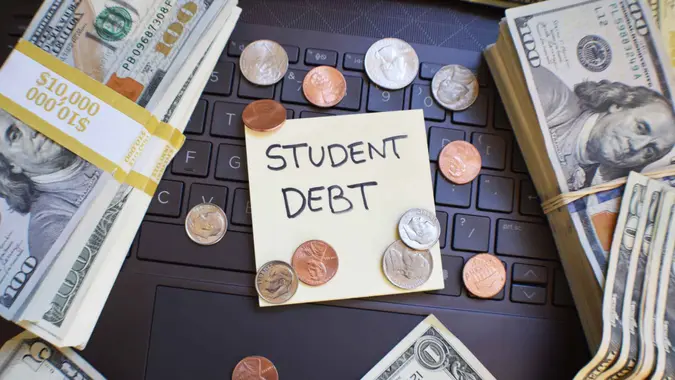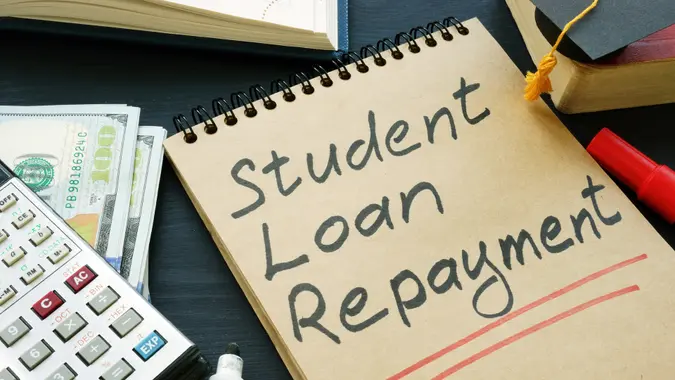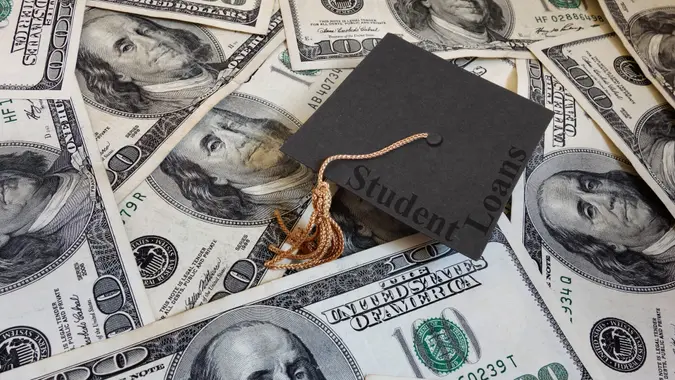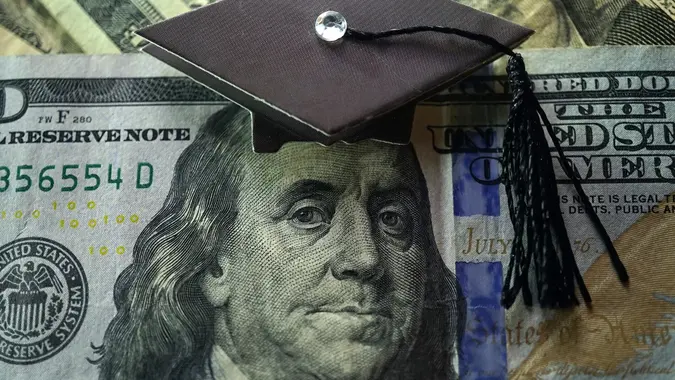New Income Driven Student Loan Repayment Plan Could Impact Borrowers’ Finances Positively for Decades

Commitment to Our Readers
GOBankingRates' editorial team is committed to bringing you unbiased reviews and information. We use data-driven methodologies to evaluate financial products and services - our reviews and ratings are not influenced by advertisers. You can read more about our editorial guidelines and our products and services review methodology.

20 Years
Helping You Live Richer

Reviewed
by Experts

Trusted by
Millions of Readers
Much of the public focus on President Joe Biden’s loan forgiveness plan has zeroed in on two things: the extension of the federal student loan payment pause until the end of the year and the $10,000 in loan forgiveness to individual borrowers who meet certain income requirements.
But for many borrowers, the biggest long-term impact is an income-driven provision that would permanently reduce their monthly payments.
As previously reported by GOBankingRates, the Biden plan includes a U.S. Department of Education proposal that would cut monthly payments in half for undergraduate loans, raise the amount of income that would be protected from repayment, forgive some loan balances 10 years earlier than current rules allow, and simplify the process of enrolling in certain payment plans.
A White House Fact Sheet released last month indicated the Biden administration is “reforming student loan repayment plans so both current and future low- and middle-income borrowers will have smaller and more manageable monthly payments.”
The Education Department plan includes the following reforms:
- Cut undergraduate loans in half by reducing the amount borrowers must pay each month to 5% from 10% of discretionary income.
- Raise the amount of income that is considered non-discretionary and therefore protected from repayment.
- Forgive loan balances after 10 years of payments instead of 20 years.
- Cover unpaid monthly interest so that no borrower’s loan balance will grow as long as they make their monthly payments.
Currently, the non-discretionary income threshold that is shielded from being used for loan repayments is 150% of the poverty level, or $20,385 a year for a single person, CNBC reported. Under the new plan, that would be raised to 225% of the poverty level, or $30,577 a year for a single person.
Justin Short, who had nearly $53,000 in student debt when he graduated from the University of Missouri a decade ago, told CNBC the 5% income cap will be “life-changing,” and also said that he’ll benefit from the higher threshold for non-discretionary income.
Julie Peller, executive director at Higher Learning Advocates, had a similar take, telling CNBC that the Education Department proposal could be a “game changer” for millions of borrowers.
“[It’s] a big recognition that people have many other things on their plate (financially),” Peller said.
She also called the interest provision “a really big deal” for low-income borrowers because, under the current system, if a borrower’s income is low enough their loan payment might not even cover the monthly interest on their loans. This means the remaining unpaid interest gets capitalized and added to the loan principle.
“[It] essentially balloons the payments and puts people in a cycle of never being able to make forward progress on their student loans,” Peller said.
But as CNBC noted, there are still some important details that need to be ironed out in the coming weeks, including who will be eligible for the program, which types of loans qualify and how people can enroll.
“It’s going to require a good amount of clear communication to people so they don’t feel they’re expecting something they’re not eligible for, and more importantly, so they don’t miss something they are eligible for,” Peller said.
 Written by
Written by  Edited by
Edited by 

























